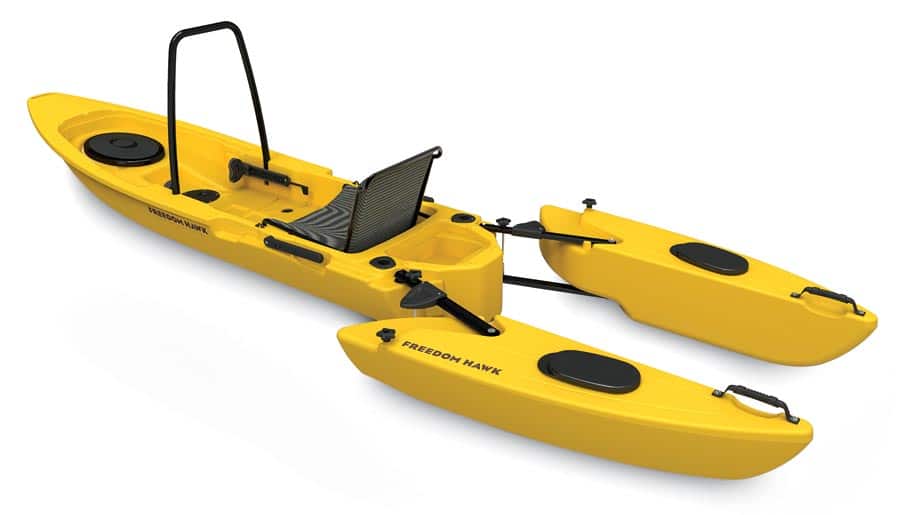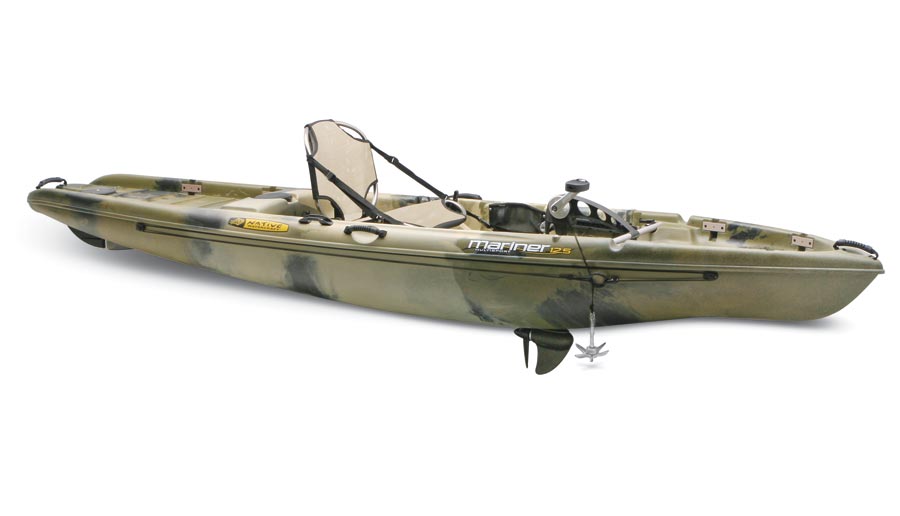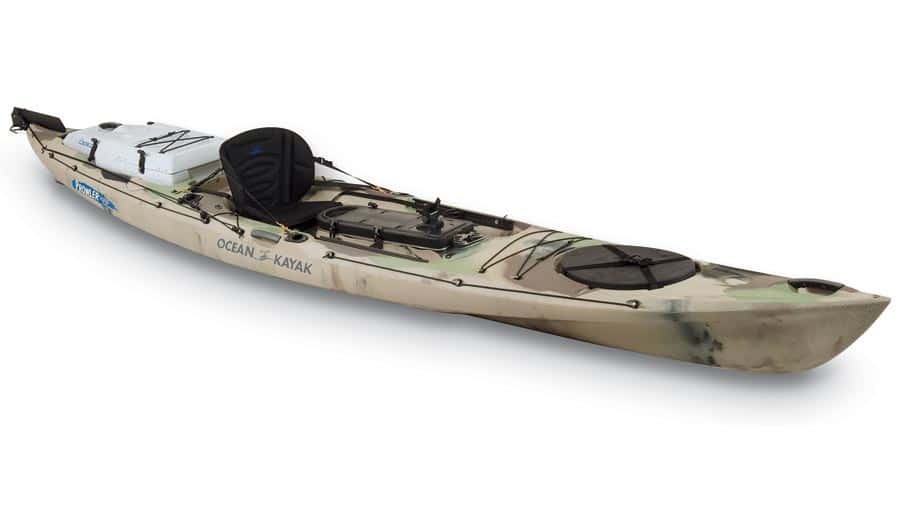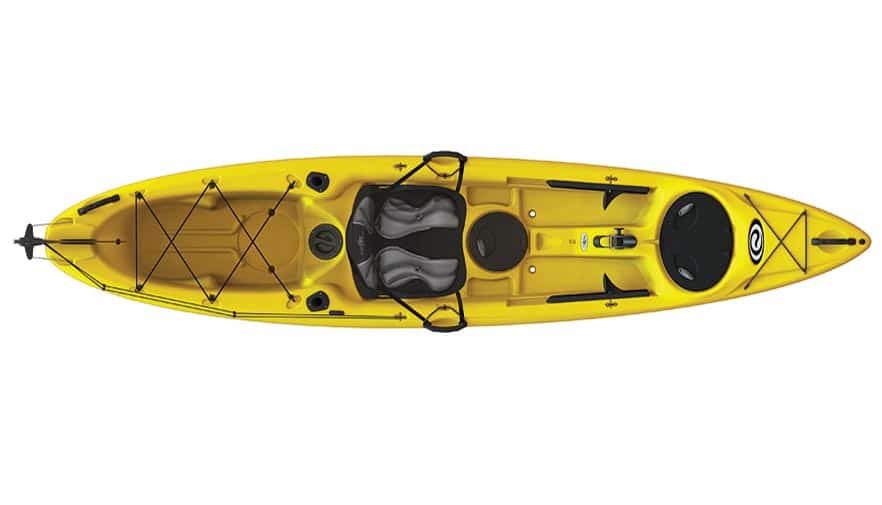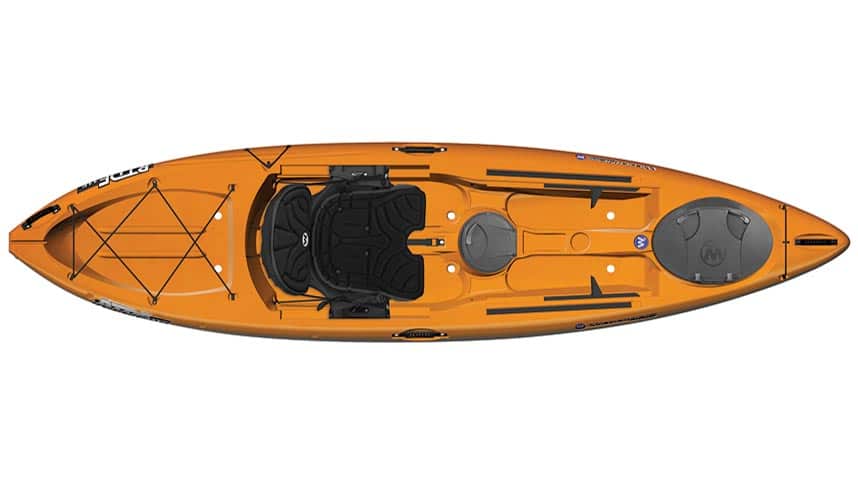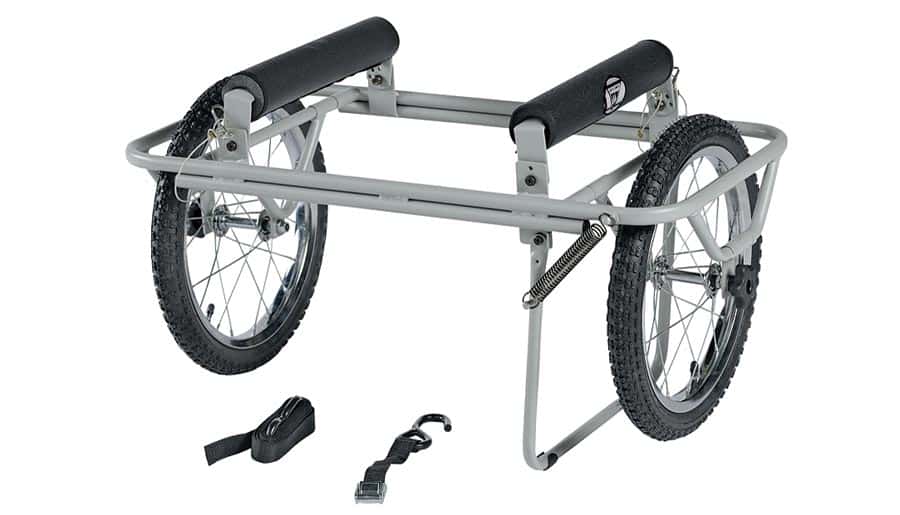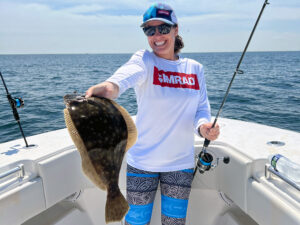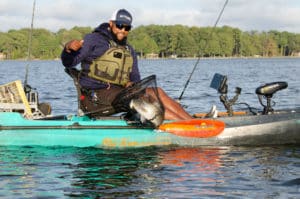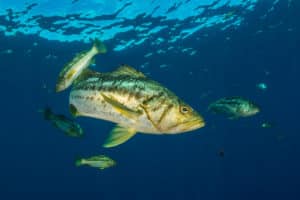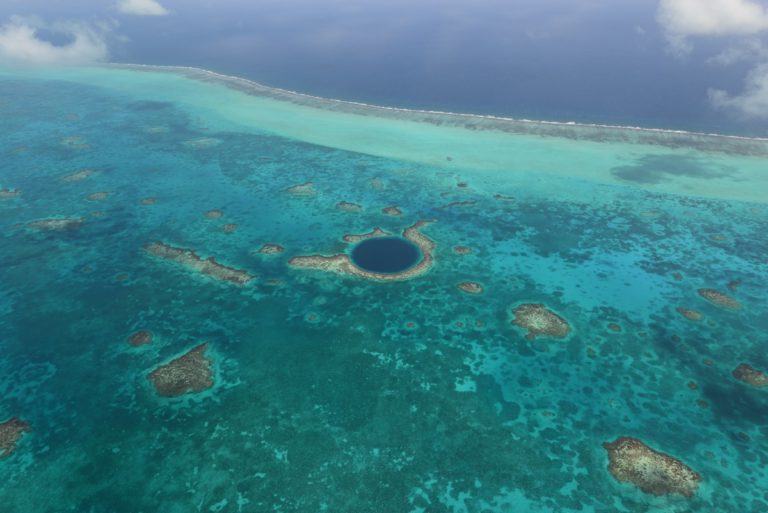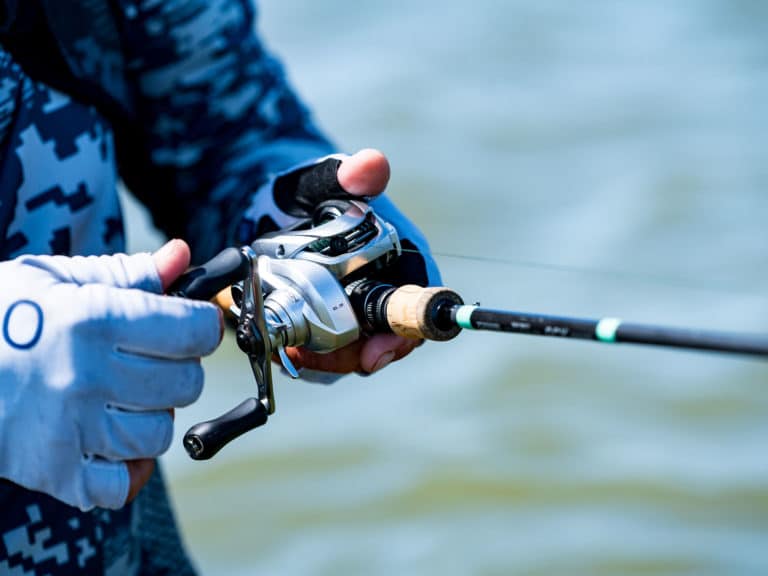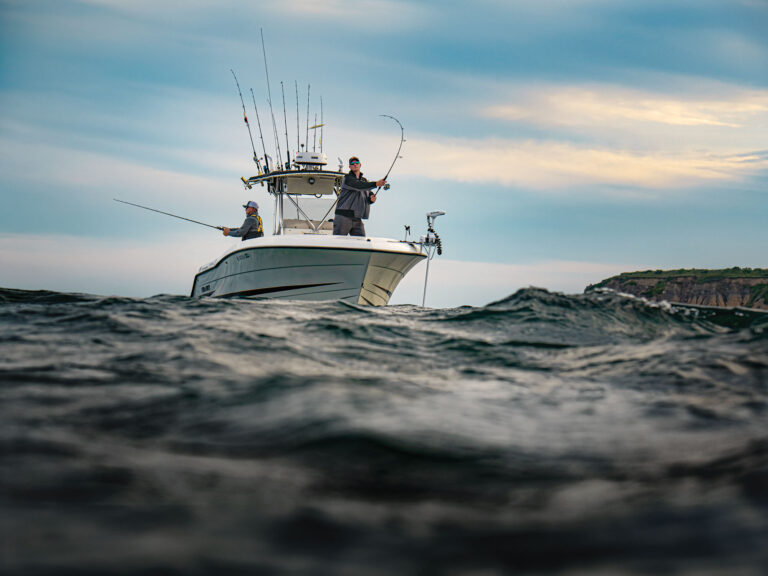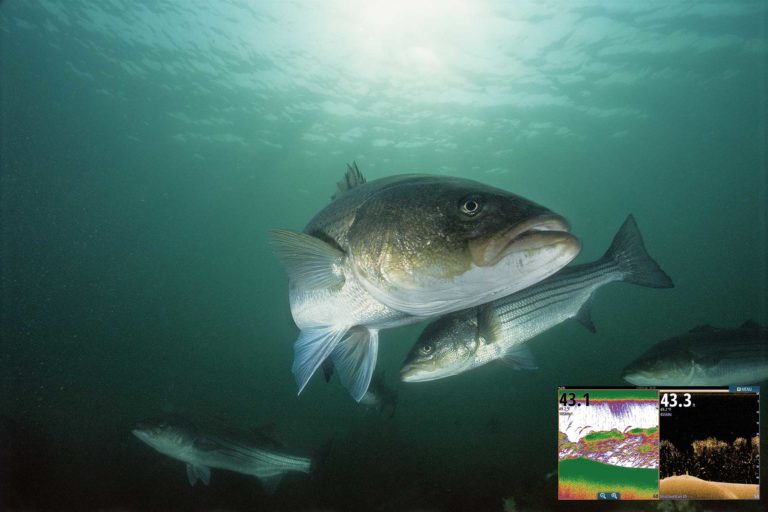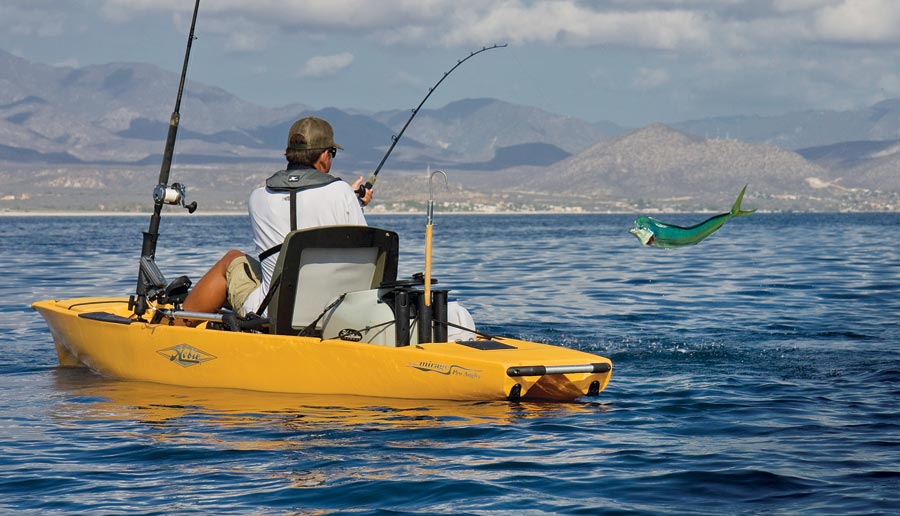
Kayak fishing in salt water is hardly a new phenomenon. For the better part of a decade, anglers have increasingly taken to the brine aboard these slender craft.
Kayaks offer a cost-effective way to fish from a boat. No gasoline is required. Ditto for a trailer. A kayak angler can bypass the chaos of a busy boat ramp and, while on the water, enjoy a more intimate relationship with his surroundings, getting to places heavy boats often can’t go and exercising all the while.
Kayaks haven’t always made great fishing platforms. But entering 2012, the little boats continue to get better and better, meeting the demands of the most serious anglers.
Get Up, Stand Up
My first experience on a ‘yak was not a great one. Yes, it was cool venturing back into some skinny places, and I caught a few fish. But that particular boat, a sit-inside model, was not exactly designed for fishing. When I tried to stand to cast, I quickly realized that was not a good idea!
I learned what manufacturers also discovered: Stability is a key fishing requirement.
“Kayaks, especially fishing kayaks, are being engineered for stability and increased carrying capacity,” says Sara Knies, marketing director at Ocean Kayak (oceankayak.com). “Outfitting is also playing a central role.”
Wilderness Systems’ (wildernesssystems.com) new Ride 115 Angler, for instance, offers a 500-pound carrying capacity and features a seat that adjusts forward or backward to help compensate drift in heavy current or wind. The seat is also easily removed, which allows unencumbered stand-up fishing over a broad area.
“The way cockpits are molded into sit-on-top kayaks, you’re limited in the area you can stand up,” says Bob McDonough, senior designer at Wilderness Systems. “When you’re standing, you’re usually outside the area of primary stability. The ability to take the seat out eliminates that.”
Another early advocate of stability-enhancing technology, Freedom Hawk Kayaks (freedomhawkkayaks.com) shook up the market in 2008 with its patented outrigger system. At least some kayaks can be effectively fished while standing up, not too dissimilar from the stand-up paddleboards that have become so popular. And like SUPs, kayaks aren’t only for inshore waterways anymore either.
Brave New World
Increased stability allowed adventurous kayak anglers to start moving off the flats and into blue-water environments, and manufacturers now build features into their boats that make offshore fishing even.
Ocean Kayak’s Trident Ultra Anglers 4.3 and 4.7, for example, have reversible center-hatch covers incorporated into their hulls, which offer attachment points for fish finders and other accessories. Need to keep these things dry? Simply rotate the hatch and — bingo! The vital equipment is now covered.
“It’s one of the innovations we’re most proud of,” says Knies.
The ability to quickly and easily shuffle gear around is important when offshore in a kayak, says McDonough. “This is especially true for West Coasters,” he says. “They’ve got to be able to stash gear, paddle through the surf and then break out the gear again.”
Offshore kayak fishing has grown intense in a short amount of time. “I got a call from a guy just the other day who’s been hooking 250-pound bluefin tuna from his Freedom Hawk,” says David Hadden, president of Freedom Hawk Kayaks.
And Morgan Promnitz, fishing product manager at Hobie Cat Co. (hobiecat.com), says the sport is also evolving. “The integration of sailing and fishing is the biggest buzz I’ve seen,” he says, noting that Hobie’s Island series — a hybrid sailboat/kayak design — is being used with great effectiveness offshore. “They’re impossible to flip, and they go fast enough that you can troll marlin lures.”
Power Sources
Will wind-driven kayaks morph into the next big thing? That’s hard to say, but no one can deny it was Hobie that revolutionized the sport several years ago with the release of its Mirage Drive, a propulsion system that harnessed leg power instead of arm power for paddling.
The Mirage Pro Angler was introduced in 2009, and Promnitz says it was “the first Hobie boat designed specifically for fishing.” The Pro Angler features six horizontal rod holders, a tackle-management system and even a leaning bar that comes in handy for stand-up fishing.
The Mirage Drive led to several other foot-powered kayaks, such as Native Watercraft’s (nativewatercraft.com) Mariner Angler, which comes with the company’s Propel Pedal Drive. But before long, a new propulsion trend emerged: electric motors.
Freedom Hawk’s new Pathfinder, for instance, provides inserts for an optional motor mount, while Ocean Kayak’s Torque comes with a 36-pound-thrust Minn Kota trolling motor built into its hull.
Knies says the trend of motorized kayaks is “strong and will keep growing.” But “it’s not about replacing traditional kayaks. Rather, it’s about giving anglers another option.”
Woody Callaway, marketing director at Native Watercraft, echoes Knies’ thoughts that these boats are specialized tools that simply offer the next level of customization. “You’re looking at products in the $2,000 range,” he says. “A lot of would-be kayak owners don’t want to spend that much.”
Where will it all lead? What’s next? Says McDonough: “The fishing kayak market has a lot of room to evolve. We’ve really just hit the tip.”

